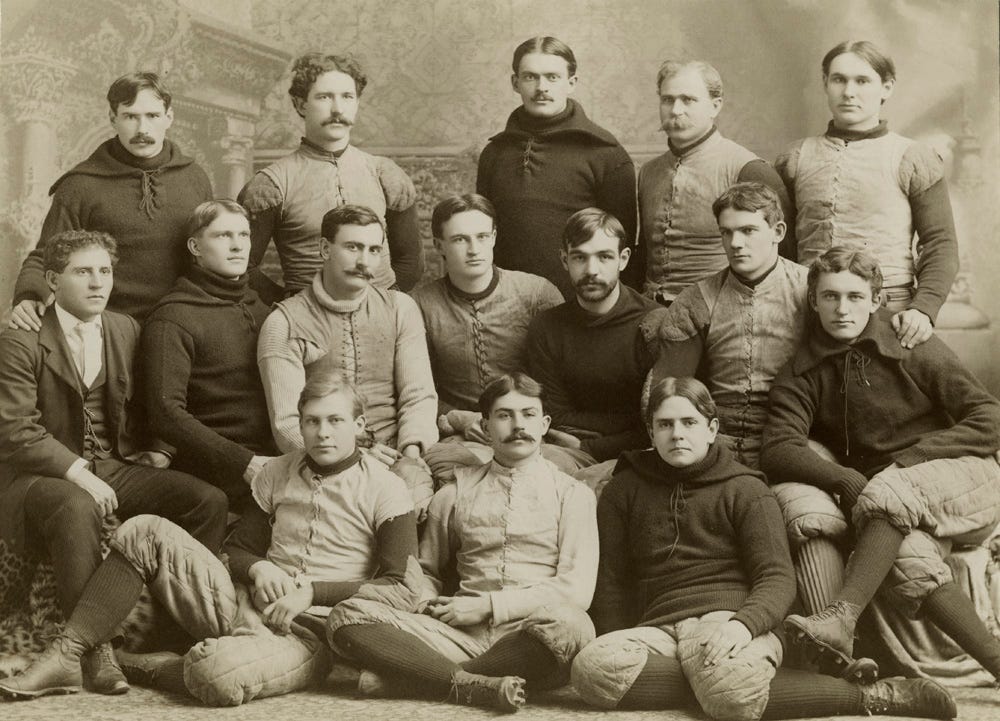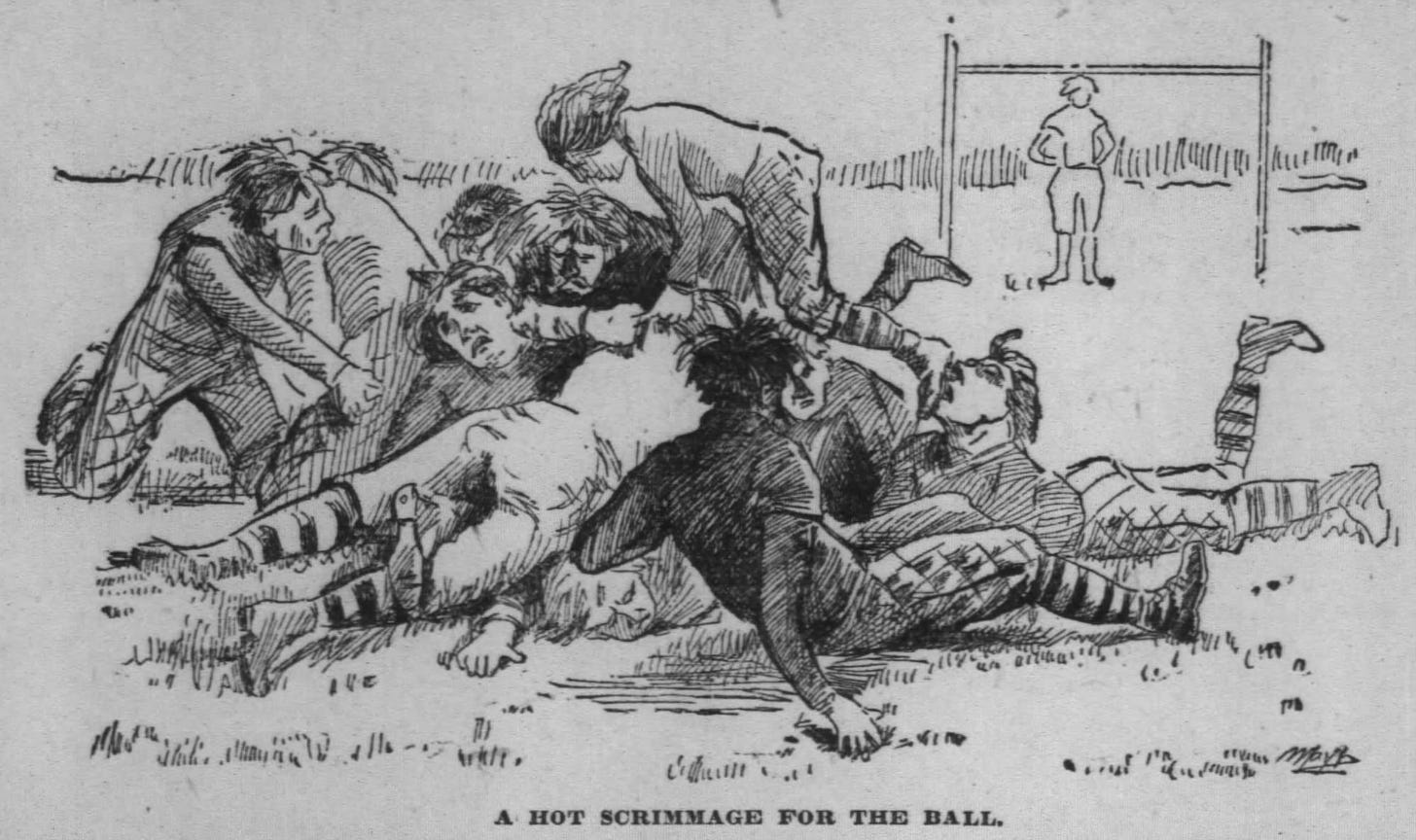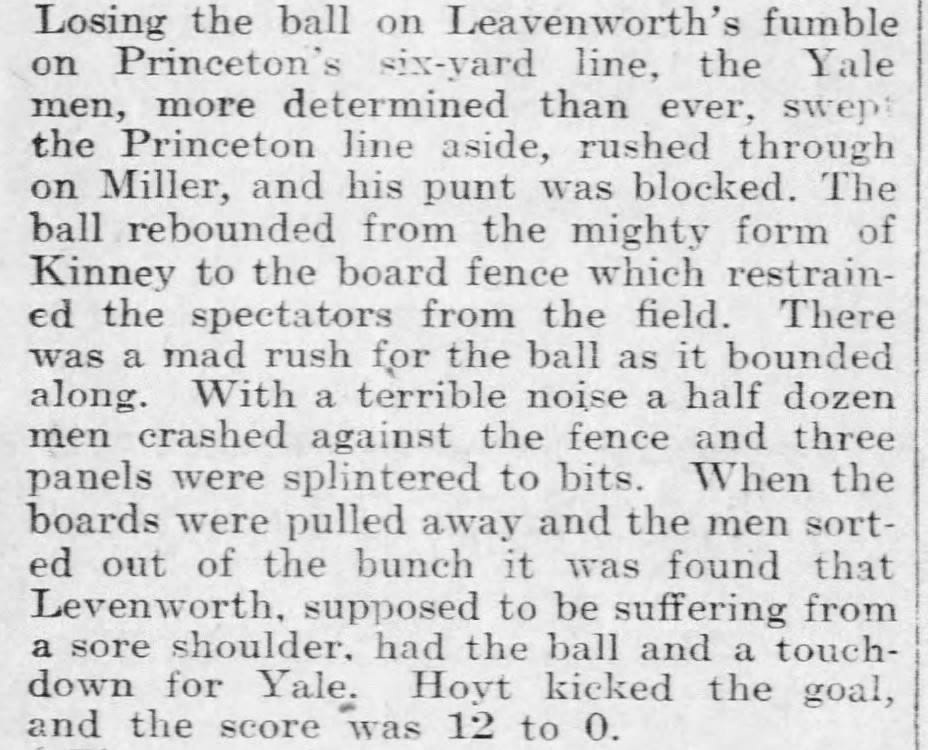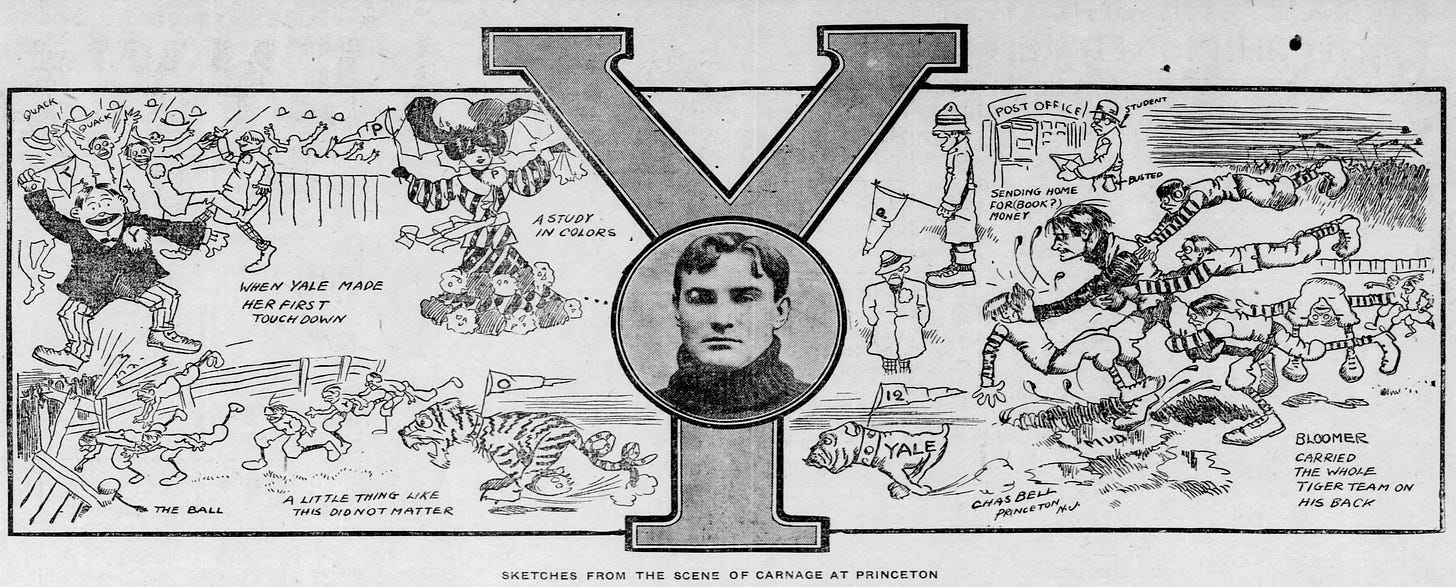When Out Of Bounds Balls Were Live
Before 1926, the ball remained live when fumbles, blocked kicks, or other circumstances sent the ball across the sideline or beyond the goal line (or end line after 1911). Ten months ago, I wrote about the days ten in a story focused on the obstacles surrounding football fields that players faced when pursuing the live ball. Spectators, substitutes, water buckets, or other objects got in their way as they tried to claim the ball.
Recently, a reader asked if I had images or illustrations of players fighting for the ball out of bounds. I did not have such an image, so I set off to find one and ended up with one illustration and a handful of amusing stories of off-the-field derring-do.
The patron saint of players retrieving off-the-field balls is Rev. Addison "Ad" Ewing, who played football and ran track for Chicago's early teams. Often described as a hurdler in track, Chicago's 1895 yearbook suggests he had more success in the pole vault. Nevertheless, when Chicago traveled to California in 1894 to play a few games, the ball went out of bounds and over a fence. Since a Stanford player was closer to the ball than Ewing, the Reverend used his hurdling skills to cross the fence and touch the ball down while the Stanfordian slowly scaled the fence.

There were several crazy fumbles in the 1895 Tulane-Mississippi game as well, with Tulane covering one that went out of bounds. I think the illustration below likely shows an inbounds fumble. Still, the illustration is worth including here.
The early 1900s saw several stories where a team punting from deep in their territory suffered mishaps leading to the ball bouncing against or over a fence. November 23, 1904, was a particularly good or bad day for these occurrences. For the first time in 10 years, Georgia Tech beat Georgia as the Heisman-led Techies benefitted from a Georgia punt snap bouncing off the goal post and over a fence, where a Techie recovered it.
The same afternoon, Yale blocked a Princeton punt that bounced behind the goal line and settled along the frame fence behind the field. Both teams pursued the ball, and the reporter tells us what happened while the illustrator shows it to us.
Here’s a close-up of the scene along the fence.
Another illustration of off-the-field live balls came a year earlier in the 1903 Kansas-Oklahoma game played in Lawrence. Kansas dominated the game, but there was a point when Oklahoma forced Kansas to punt from their 6-yard line. The punt hit another Kansas player and bounced behind the goal line and over a fence. Whether the crowd in that area was friend or foe is unknown, but a fan tossed the ball to an Oklahoma player for the touchdown, giving them their only score in a 17-5 loss.
Yet another fun story came in 1905 when Minnesota played one half each against Shattuck and Pillsbury prep schools. (The Gophers count a 54-0 victory over Shattuck in their win total, though the newspapers show. they scored 36 against Shattuck and 18 against Pillsbury.) Minnesota blocked a Shattuck punt during the first half, sending the ball behind the goal line and over a fence into the bleachers. The bleachers were the open type, which allowed the ball to fall under the stands. A Minnesota player arrived first and tried to get the ball, but he could not fit between the boards to get the ball. A smaller Shattuck player appeared next, slipped between the boards, and touched the ball down for a safety.
Newspaper reports of games played after 1905 continue to describe the scrambles for balls that went out of bounds, but the concern for player safety led to an increase in local "ground rules" that limited these plays. The typical ground rule was that a ball going out of bounds became dead when it entered the crowd or other obstacles surrounding the field. Under those rules, the ball variously went to the team that put the ball into play or the team whose player last touched the ball.
The rule makers of 1926 did away with live balls out of bounds by declaring the ball dead when it landed or touched an out-of-bounds object. Under the 1926 rules, they awarded the dead ball to the team whose player last touched it inbounds. That rule remains in use in Canadian football, but the NCAA rules changed in 1949, awarding the ball to the team that last possessed it before going out of bounds, awarding the ball at the yard line where they lost possession to mitigate against forward fumbles out of bounds.
Football Archaeology is reader-supported. Click here to buy one of my books or otherwise support the site.






